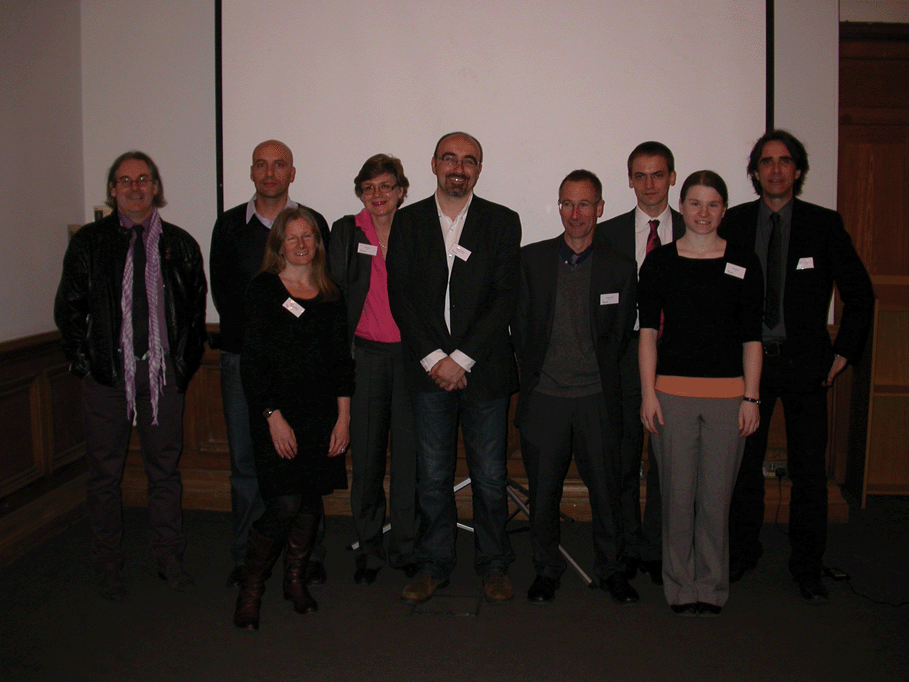A few weeks ago, I attended the 6th annual meeting of the “Control and Prediction of the Organic Solid State” (CPOSS) project in the Old Refectory of University College London. The meeting was themed ‘Crystals or not – where do we go from here?’. There were over 100 delegates in attendance, with both academic and industrial members present.
Sally Price (University College London) opened the morning session with an outline of the CPOSS project achievements to date. Tackling the over-prediction of polymorphs, she issued a caution when deciding that unobserved thermodynamically feasible structures cannot appear. The case of the carbamazepine form V polymorph clearly demonstrated this, as it could in fact be isolated by seeded sublimation! Alastair Florence (University of Strathclyde) followed, focusing on the complementary nature of experimental and computational methods to characterise racemic and enantiopure naproxen. The calculated crystal energy landscape, binary melting point phase diagram, solubility measurements and limited solid-state screening, were all consistent with the racemic Pbca and enantiopure P21 compounds being the only practically relevant solid phases of the free acid naproxen.
A slight diversion in theme by Simon Gaisford (University College London) revealed a novel method for identifying polymorphs by thermal methods rather than crystallographic techniques. Different polymorphs have different melting temperatures and heats of fusion. By varying the rate of heating, it was possible to isolate a metastable carbamazepine-nicatinamide cocrystal polymorph. The final talk of the session was by Matthew Hapgood (University College London) who discussed the intriguing case of tetrolic acid, where the lowest global minima of the crystal energy landscape are not the actual alpha or beta polymorphs. By combining solution simulations and nanocrystalline molecular cluster stability calculations, it was possible to extract the actual crystal structures from predictions of energy landscapes.
From left to right: Professor Chick Wilson (University of Bath), Dr Philippe Fernandes (formerly University of Strathclyde), Dr Sharon Cooper (University of Durham), Professor Sally Price (UCL), Professor Jon Steed (University of Durham), Professor Derek Tocher (UCL), Dr Matthew Habgood (UCL), Dr Doris Braun (UCL), Professor Alastair Florence (University of Strathclyde). Photo courtesy of Louise Price.
Following lunch and a busy poster session, the afternoon session started with a presentation by Jon Steed (University of Durham) on crystallisation in anion-switchable supramolecular gels, with a particular focus on producing materials with switchable flow characteristics. Sharon Cooper (University of Durham) offered an interesting way to try to overcome kinetic control of metastable polymorphs (such as the infamous case of Ritonavir) through the use of microemulsions driven by thermodynamic control for polymorphic compounds like mefenamic acid and γ-glycine. Phillippe Fernandes provided a personal overview of his experience in solid-state chemistry, both from an academic and an industrial point of view.
Doris Braun (University College London) emphasized that contact with water cannot be avoided during the manufacturing process of pharmaceuticals. The already complex crystal structure predictions thus require the additional step of hydrate formation predication in order to more accurately predict polymorph formation, such as for 2,4-Dihydroxybenzoic acid and 2,5-Dihydroxybenzoic acid. The session was concluded by Chick Wilson (University of Bath) as a champion of the Directed Assembly of Extended Structures Network. He presented the activities and future plans of this network, which aims to foster collaborations in order to be able to design, engineer and control materials for applications in frontier manufacturing and other industries.
The meeting was enjoyed by all, and was an excellent overview of the current status of structure prediction, as well as highlighting challenges still facing solid-state chemists. Look out for my interview with Sally Price also on the blog!











